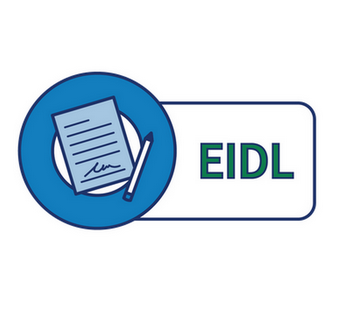
Why is an international tax advisor required? Every citizen of the United States needs to carefully file their taxes. It is in your best interest to prepare considerably beforehand when filing taxes in the U.S. By doing so, you will make the process of filing taxes easy for yourself. One way to prepare beforehand is taking help an international tax advisor. We’ll discuss this in detail a little later. Before filing your taxes, organize the necessary information and documents that you may require.
You may be wondering how an international tax advisor helps in tax preparation and what is their use? Well, to find the answer to this, you need to read on. Regardless of where you’re currently residing, your income is subjected to U.S income tax if you’re a citizen or resident alien of the United States. Also, the same requirements that apply to resident aliens or citizens residing in the U.S for filing income taxes are what you’re subjected to. Though, if you fulfill specific requirements while residing abroad, you may be able to get many income tax benefits. This is what an international tax advisor can help you with.
By taking help from an international tax advisor, you can get a certain portion of your foreign earned income excluded from your income. Also, with help from an international tax advisor, you can get certain housing expenses deducted from your gross income but before you get any of these benefits, you must file your taxes and choose the exclusion. Additionally, for the foreign income tax payments you make, you may be able to get an itemized deduction or a tax credit. Depending on what tax conventions or treaties the U.S has with your current country of residence, there is also a chance for you to minimize your foreign tax liability. Finally, an international tax advisor may help you to claim foreign earned income exclusion of more than $100,000 but to get this benefit or any of the other tax benefits mentioned above, you must file your taxes. Therefore, understanding filing of taxes and how to perform them is necessary.
Understanding filing of taxes
A basic requirement of tax filing is that you report both the payments withheld by your employer and the tax you paid directly to the IRS. Though, not everyone needs to file taxes: you will be required to file taxes in the United States only if you fall within certain income brackets. Following income brackets are required to file taxes:
- Single individuals aged less than 65 with annual salary equal to or more than $10,150
- Single individuals aged more than 65 with annual salary equal to or more than $11,700
- Head of household aged less than 65 with annual salary more than $13,050
- Head of household aged more than 65 with annual salary more than $14,600
- Married people aged less than 65 filing jointly with combined annual salary equal to or more than $20,300
- Married people aged more than 65 filing jointly with combined annual salary equal to or more than $22,700
- Married people aged less than 65 filing separately with annual salary equal to or more than $3,950
- Widow or widower aged less than 65 having a dependent child with annual salary equal to or more than $16,350
- Widow or widower aged more than 65 having a dependent child with annual salary equal to or more than $17,550
You do need to file taxes if you do not fall into any of the aforementioned income brackets. Before you understand how to file taxes, you must know whether you’re even required to file taxes: using the aforementioned information, you’ll be able to find this out. Now that we’ve discussed what filing taxes means and who’s eligible for it, it’s time to look at how you can prepare yourself for filing taxes.
How to prepare for filing taxes
For most people, tax filing is a simple procedure. Entering the W2 numbers on the tax form and getting the deductions and exemptions you’re eligible for are the only things you need to do. Filing taxes is simple but if you do not do your homework and aren’t prepared for filing taxes then this simple procedure of filing taxes can become a major source of headache. If you’re residing abroad, you may require the help of an international tax advisor but certain tax preparation steps are the same whether you’re residing abroad or in the United States. Often, tax filers in the U.S find the process of filing taxes hectic due to the time and complexity involved in the process. Luckily, by preparing yourself appropriately, you can make this process as simple as possible. Following are the steps you need to follow if you wish to simplify the tax filing process.
Get your documents ready
Getting your documents organized and ready is the first thing you need to do to prepare yourself for tax preparation. This is something even an international tax advisor would tell you. Organizing and getting your documents ready means collecting and getting all the required tax filing documents ready for submission. You will ease the tax filing process for yourself by getting your documents ready beforehand. You’ll need to arrange some basic documents before making the trip to the office of a tax preparer or an international tax advisor. Whether you’re residing in the U.S or living abroad, you will need to arrange the following documents:
Photo identification
To file taxes in the U.S, the first and foremost document you will need is your photo identification. Verifying your lawful existence is the primary reason photo identification is required. The Photo ID you submit could either be your driver’s license or your passport. Also, presenting your SSN is also required. Finally, you’ll need to show the SSN card of your children and your spouse if you are married and have kids.
Proof of income
Proof of whatever you earned during the past tax year is what you’ll need to show before you file your taxes. There is very simple reason for this: a record of your income from employer and other sources is what the IRS needs to keep with them.
Proof of expenditure
The final documents you need to arrange to prepare yourself for tax preparation is proof of expenditure. This document will also assist the international tax advisor in helping you get the tax benefits you’re eligible for. If you want to minimize your final tax bill, you must find out about the deductible expenses when you’re preparing yourself for filing taxes. By providing your tax preparer or international tax advisor proof of expenditure, you help them greatly. Your tax preparer or international tax advisor will help you to lower you tax bill by churning out the debitable expenditures.
Find out about possible deductions to avoid overpaying taxes
As they aren’t aware of the tax discounts they’re eligible for, many Americans and resident aliens of the U.S unknowingly overpay their taxes. This is something you mustn’t do whether you living in the U.S or residing abroad. Do not waste the chance to lower your tax bill. To lower your tax bill, you do not need to do anything extraordinary. You can lower your tax bill by simply keeping track of and listing down your daily activities. Basically, you need to see what expenses your regularly incurred during the past tax year. This could include health insurance expenses, charitable contributions, job hunting expense, any education loans and, business travel expenses. Once you know about all the expenses you regularly incurred during the previous year, inform your tax preparer or international tax advisor about them to get a tax rebate.
Know the deadline
If you aren’t aware of the tax filing deadline, the efforts you put in to prepare yourself for filing taxes will bring you no benefit. There is no point of getting the required documents together and finding out about any possible tax discounts if you don’t have any idea of the tax filing deadline. Also, if you know the deadline, you can apply to the IRS for an extension in the last date to file taxes if for some reason you aren’t able to file the taxes on time. You won’t be able to benefit from this IRS offering if you have no idea about the tax filing deadline so knowing the tax filing deadline is crucial.
You must maintain a checklist if you want to be aware of the deadline and want to ensure that you have all the necessary documents with you. Apart from maintaining a checklist, you must also know about the various types of tax forms.
Understanding the various types of tax forms and their purpose
Until you know about the various types of tax forms and their purpose, you won’t be able to file your taxes. Also, if you don’t know about the various types of tax forms and their purpose, you won’t get any benefits from filing taxes. The IRS provides over a thousand tax forms for people to report expenses, income and other financials. Fortunately, to understand everything there is to know about filing taxes, you only need to look at a few tax forms and their purpose. Basically, there are two types of tax forms: the first one is used for filing taxes while the second one is sent by the IRS. To make things simple, we’ll discuss the two tax form types separately.
Forms to file taxes
The 1040 forms including 1040A, 1040 and 1040EZ are the main type of tax forms required for filing tax returns. The 1040 form you require depends on your income and whether you wish to claim tax discounts or credits. Here’s a look at the three 1040 form types and their eligibility criteria.
Form 1040
People who do not qualify for form 1040EZ and 1040A require form 1040 to file taxes. You will need 1040 if:
- You’re self employed
- Have an annual income equal to or more than $100,000
- Intend to file for deductions
Form 1040EZ
Form 1040EZ is the simplest of the three aforementioned forms and you can use it to file taxes if:
- You are aged 65 or less
- Have an annual income of less than $100,000
- Do not intend to file for deductions
- You’re without any dependents
Form 1040A
More comprehensive than 1040EZ and simpler than 1040, form 1040A is used to adjust taxable income for deductions such as child tax credits and student-loan interest. Though, you must keep in mind that form 1040A cannot be used to file for deductions. The two things that make you eligible for this form include an annual income of less than $100,000 and being self-employed.
To find out which 1040form you need to file taxes, get in touch with a tax preparer or an international tax advisor. They will tell you exactly which 1040 form you need. Apart from the forms you need to file taxes, there are some tax forms sent by the IRS to you (the tax filer). These forms are what we’re going to look at next.
Tax forms sent by the IRS
The IRS may send you some tax forms to your mailing address: this is something you must expect. If you did some sort of business and received income from it, the IRS sends you tax forms so that you can report the income you earned. The income generating business activity you need to fill out the IRS tax form for includes activity with the bank, credit union, mutual fund companies and your employer. Form of the forms that the IRS may send you.
Form 1098
There are three different forms of form 1098. The IRS will send you one of these forms if you:
- Made mortgage payment
- Paid student loan
- Incurred college tuition fees
- Make a vehicle donation to charity
Form 1099
Form 1099 is used to report income other than salary, tips and wages. An independent contractor, a freelancer or a consultant who gets paid over $600 for his or her work receives form 1099 from the IRS. There are many types of form 1099 including:
- 1099-DIV
- 1099-INT
- 1099-Misc
- 1099-OID
The 1099 form type which you’re likely to receive from the IRS is something that your tax preparer or international tax advisor would know better. So get in touch with your tax preparer of international tax advisor to find this out. Before we take a final look at what an international tax advisor can do for you, let’s briefly discuss form W2: the most important of all tax forms.
Form W2
You cannot file your taxes until and unless you know about and understand form W2. Your employer uses form W2 to record whatever you earned during the past year. Without form W2, you can fill out the tax forms mentioned above. W2 form has all the information you need to file taxes including the wages you earned and the taxes you’re employed has withheld.
Taking help from a tax preparer or international tax advisor
If you’re having problems in preparing yourself for filing taxes, you can take help from a tax preparer or an international tax advisor if you’re residing abroad. An international tax advisor will provide you the necessary expertise without charging exorbitant fees. The international tax advisor will help you to prepare your taxes and get any tax rebates you qualify for. The tax preparer or international tax advisor will help you with every little detail of the tax filing process so taking help from them is beneficial. The tax advisor will give you good suggestions for the next tax year and will inform you about the expenses you need to list for tax discounts or exemptions.
Your income tax filing requirements get a bit complicated when you move from the United States to work in another country. Also, you may have to experience some additional regulatory and tax problems. Fortunately, an international tax advisor with all their expertise can help you to overcome all of the aforementioned issues. Additionally, the international tax advisor with ensure that you get all the tax benefits of working in another country. The tax advisor will make the tax filing process easier for you.
Understanding your tax commitments both abroad and in the United States is crucial for you. This becomes even more important if you have assets in and earn from countries other than U.S. An international tax advisor will inform you about all your tax responsibilities and commitment so that you can easily file your taxes and get the tax benefits you’re eligible for.



















